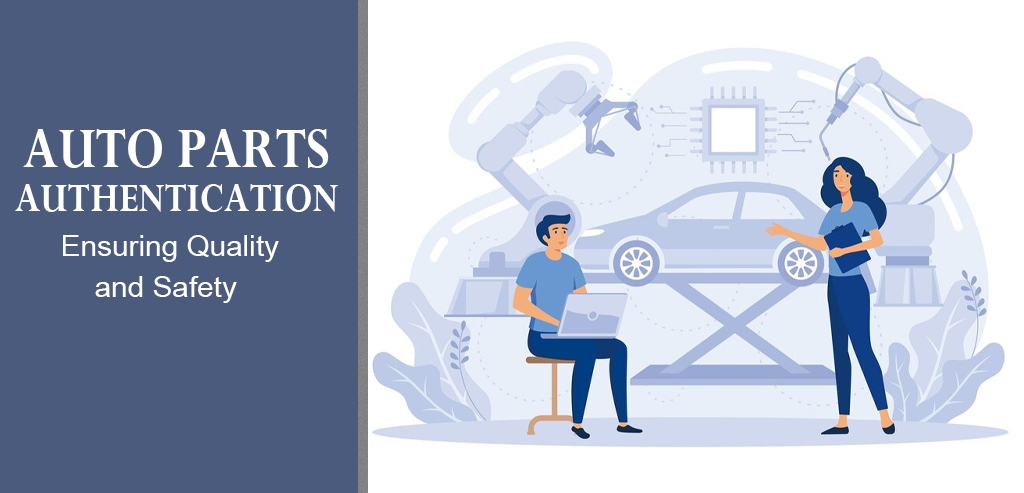As the automotive industry continues to expand and evolve, the demand for auto parts has significantly increased. However, with this rise in demand comes the challenge of ensuring the authenticity, quality, and safety of these parts. The presence of counterfeit auto parts not only poses safety risks but also has a significant economic impact. The global automotive industry suffers billions of dollars in revenue loss each year due to counterfeit parts. By implementing authentication systems, manufacturers and suppliers can reduce the economic losses associated with counterfeit products and protect their profitability.
Counterfeit and substandard auto parts pose significant risks to both vehicle owners and the overall automotive ecosystem. To address this issue, auto parts authentication systems have emerged as essential tools in the industry.
The Importance of Auto Parts Authentication
Auto parts authentication is crucial for maintaining the integrity of the automotive market. Authenticating auto parts helps to ensure that they meet the required standards, comply with regulations, and are safe for use. Counterfeit parts not only compromise the performance and reliability of vehicles but also pose serious safety risks. Fake parts may lack durability, fail prematurely, or cause malfunctions in critical systems such as brakes, steering, or airbags. These issues can lead to accidents, injuries, and even fatalities.
Moreover, counterfeit parts negatively impact the reputation and profitability of automotive manufacturers and suppliers. They erode customer trust and can result in costly recalls, warranty claims, and legal liabilities. By implementing robust authentication systems, the automotive industry can safeguard consumers, protect their own brands, and maintain the overall safety and quality standards of the vehicles on the road.
Authentication Technologies and Approaches
Auto parts authentication involves employing various technologies and approaches to verify the legitimacy and quality of parts. Here are some commonly used methods:
Unique Identification Markings: Authentic auto parts often bear unique identification markings, such as serial numbers, holograms, or barcodes. These markings enable traceability, allowing manufacturers, suppliers, and consumers to verify the origin and authenticity of the parts.
Tamper-Evident Packaging: Secure packaging with tamper-evident features can help prevent unauthorized access and tampering with auto parts during transportation and storage. This ensures that the parts maintain their integrity and authenticity until they reach the end-user.
Track and Trace Systems: Track and trace technologies utilize advanced software and hardware to monitor and trace the movement of auto parts throughout the supply chain. These systems provide real-time visibility, allowing stakeholders to identify and address any suspicious activities or deviations from the authorized distribution channels.
Certification and Compliance Programs: Certification programs, such as ISO standards, ensure that manufacturers adhere to specific quality and safety guidelines. Compliance with these programs provides consumers with confidence that the parts they are purchasing meet established industry standards.
Consumer Education and Awareness: Auto parts authentication systems not only authenticate the parts but also raise consumer awareness about the risks of counterfeit products. Educating consumers about the importance of purchasing authentic parts enhances their understanding of the potential dangers associated with counterfeit alternatives. It empowers them to make informed decisions when purchasing auto parts and strengthens their demand for genuine products.
Benefits of Auto Parts Authentication
Implementing auto parts authentication systems brings numerous benefits to all stakeholders involved:
Consumer Safety and Confidence: Authentic auto parts ensure the safety and reliability of vehicles, minimizing the risk of accidents and failures. By using authenticated parts, consumers can have confidence in the quality of the components they install in their vehicles.
Brand Protection: Auto manufacturers and suppliers can safeguard their brand reputation by taking proactive measures to authenticate their products. This helps build trust among consumers and differentiates their offerings from counterfeit alternatives.
Legal Compliance: Authentication systems help manufacturers comply with regulations and standards imposed by government bodies and industry organizations. Adhering to these requirements ensures legal compliance and avoids penalties or legal consequences.
Supply Chain Visibility: Authentication technologies offer enhanced visibility across the supply chain, allowing manufacturers to detect and mitigate counterfeit parts early in the process. This leads to improved inventory management, reduced costs associated with recalls, and more efficient aftermarket services.
Conclusion
Auto parts authentication plays a vital role in maintaining the quality, safety, and trustworthiness of automotive components. By implementing robust authentication systems and technologies, manufacturers, suppliers, and consumers can ensure that only authentic parts are used in vehicles. The benefits of auto parts authentication extend beyond safety to include brand protection, legal compliance, and improved supply chain visibility. As the automotive industry continues to advance, investing in comprehensive auto parts authentication becomes increasingly crucial in ensuring the overall quality and reliability of vehicles on the road.

